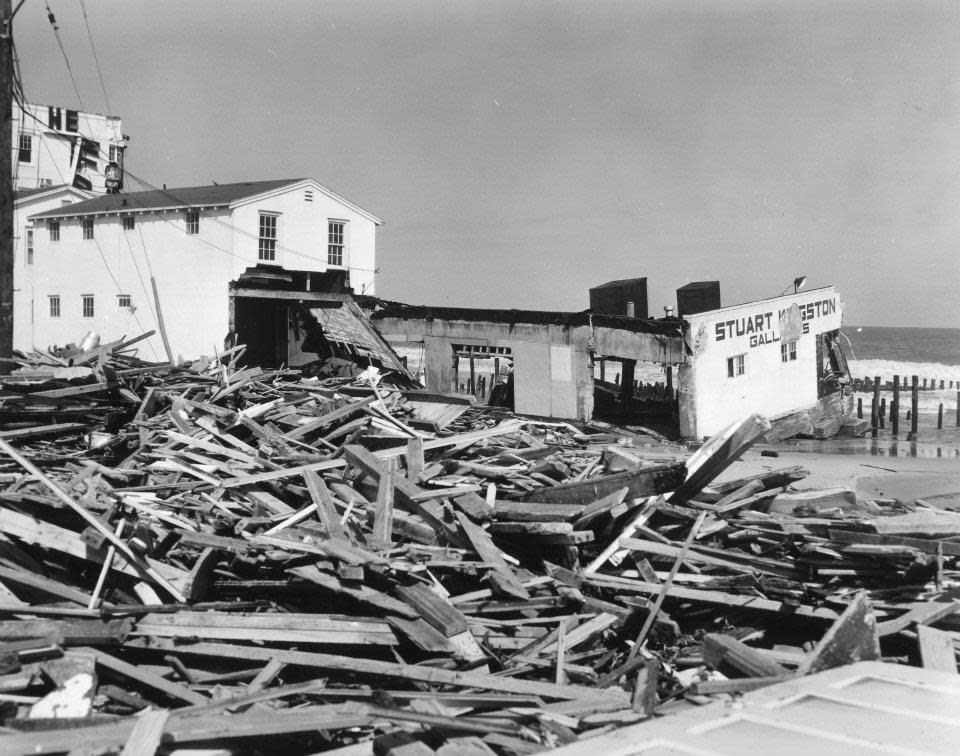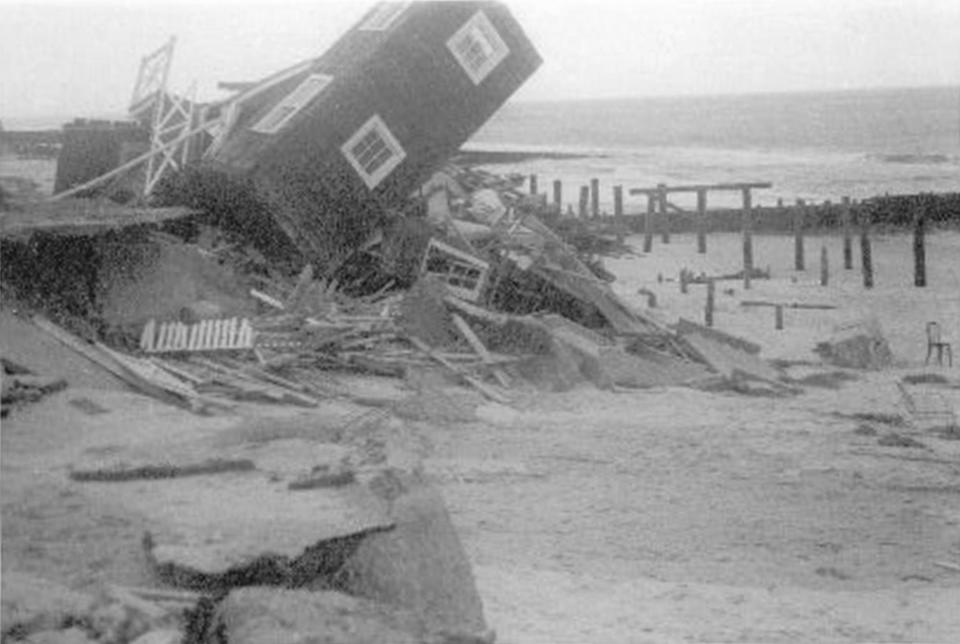Before and after: How Rehoboth Beach bounced back from Storm of '62 devastation
“It was the best of times; it was the worst of times.” The opening words of "A Tale of Two Cities" by Charles Dickens were never more true than at Rehoboth Beach in 1962.
In March, two low pressure disturbances combined to form a single nor’easter off the Atlantic coast. A high-pressure system over Canada prevented the storm from moving quickly northward.
The slow-moving nor’easter was far enough off the coast to create a long fetch (the distance winds travel over open water) that enabled the wind to drive an enormous amount of water onto the beach. The wind and water seemed to be at their highest on March 7, Ash Wednesday, which gave the ferocious storm its name.
At Rehoboth, the waves shattered the boardwalk and carried many of the timbers into the nearby streets. Most of the buildings in the oceanfront block were beaten to splinters or completely disappeared, swallowed up by the roaring ocean waves. When the surf undermined the foundation of the Sussex Apartments, the building gave way, and the line of boardwalk shops that fronted the apartments were bashed and beaten to pieces.

A wing of the Atlantic Sands, a modern concrete building, collapsed under the fury of the storm. Two of the most popular attractions on the boardwalk, Funland and Dolle’s Candyland, were battered almost beyond recognition.
The storm tore out the oceanfront façade of the Henlopen Hotel, the Grande Dame of hotels in Rehoboth. Rooms that had once provided an excellent view of the Atlantic were now part of the debris tossed about by the surf. Waves undermined the foundation of the Stuart Kingston Galleries, knocked in its front and left the building leaning back as if shying away from another blow.
On, March 8, 1962, the Delaware Coast Press reported: “Disaster, without any forewarning, struck the Rehoboth Beach, Lewes and Dewey Beach area … causing damage to properties estimated at over $10 million. The havoc was so great it belies the imagination.” For Rehoboth, it was the worst of times in the town’s history.
After the storm had subsided, Rehoboth residents, assisted by a variety of government agencies, began to clean up the resort and get ready for the upcoming summer season.

On June 22, 1962, the Milford Chronicle reported, “Vacationists and conventioneers alike have expressed amazement at the manner in which Rehoboth Beach has bounced back from the effects of what is now referred to as “The Great Storm of ‘62’, Mar.6-8.”
The newspaper went on to comment that the resort, “with its new beach and boardwalk and rebuilt built ocean front, is acquiring a ‘new look’ that will make it more attractive than the pre-storm Rehoboth Beach.”
During the middle of June, the annual encampment of the Department of Delaware Veterans of Foreign Wars flooded the resort with conventioneers to kick off the summer season. Throughout the summer, the resort continued to draw large numbers of visitors; and on Sept. 7, the Milford Chronicle noted, “The 1962 ‘season’ not only promises to be one of the best ever experienced by Delaware’s coastal resorts but also the longest notes the Delaware State Development Department.”
The newspaper went on to explain, “For many years, the ‘season’ … ended on Labor Day … However, in recent years, the pattern has changed with the season being gradually extended, enabling late vacation visitors to enjoy the warm water, bright sunshine, and cool, pleasant evenings.”

The Ash Wednesday storm was the most devastating event in Rehoboth’s history but, the rebuilt boardwalk, the new look of the resort, and the longer season combined to make 1962 the worst of times and the best of times in Rehoboth.
Principal sources
Charles Dickens, "A Tale of Two Cities," New York, Charles Scribner’s Sons, 1868, p. 1
Delaware Coast Press, March 8, 1962.
Milford Chronicle, June 22, 1962; Sept. 7, 1962.
DELAWARE HUMOR: Coastal allure: Wind turbine, sandy beaches and a sitting president to boot
DELAWARE HISTORY: Dead or alive! How a sea captain's death in Lewes fueled sensational story
This article originally appeared on Salisbury Daily Times: How Rehoboth Beach bounced back after Storm of '62 devastation

